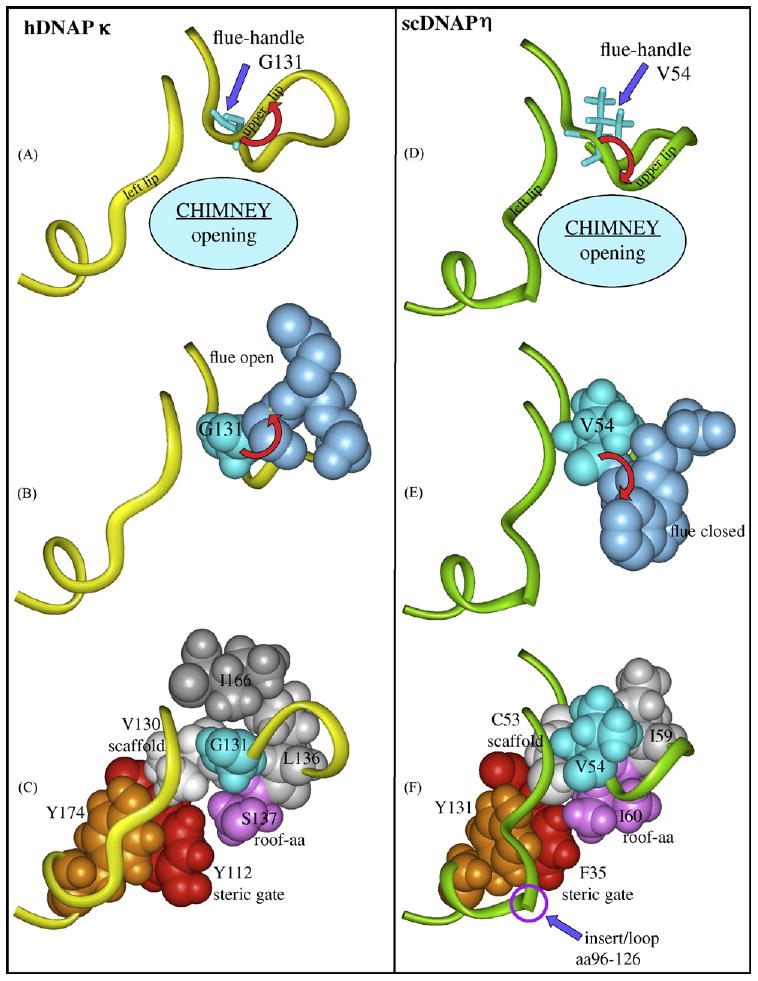Fig. 8.

Regions of hDNAP κ (panels A and B), scDNAP η (panels C and D) and hDNAP η (insert) that show why the chimney opening is large or small. Panels A–C: Y-Family DNAPs in the IV/κ-class have a glycine “flue-handle,” such as G131 (turquoise) in hDNAP κ, which leads to upward curvature of the protein backbone in the chimney upper lip (red arrow, panel A) and results in the “flue” amino acids (S132/M133, blue, panel B) to point away from the chimney, giving a large chimney opening. Panel C shows V130 (white) that serves as a scaffold to organize the chimney's upper lip and left lip (yellow ribbons in panel A), along with the roof-aa (S137, purple), the steric gate (Y112, red) and a conserved tyrosine (Y174, brown), which stacks on the backbone of the left lip and orients it. V130 forms a rectangle with the G131 flue-handle, L136 (gray) and the S137 roof (pink) upon which I166 stacks (dark gray). Panels D–F: DNAP V/η-class DNAPs have a bulky “flue-handle,” such as V54 in scDNAP η (turquoise, panel D), which causes downward curvature of the chimney upper lip (red arrow, panel D), and results in the “flue” amino acids (Q33/W34, blue, panel E) to plug the chimney, giving a small opening. Panel E shows scaffold C53 (white) organizing the chimney's upper lip and left lip (green ribbons in panel C), along with the roof-aa (I60, purple), the steric gate (F35, red) and a conserved tyrosine (Y131, brown), which stacks on the backbone of the left lip and orients it. C53 forms a rectangle with the V54 flue-handle (turquoise), I59 (gray) and the I60 roof (pink). scDNAP η has a large insert/loop (aa96–126) in the left lip, which is represented as a discontinuity. X-ray coordinates are from 2OH2 for hDNAP κ [18] and from 1JIH for scDNAP η [16], where hydrogens were added using insightII.
